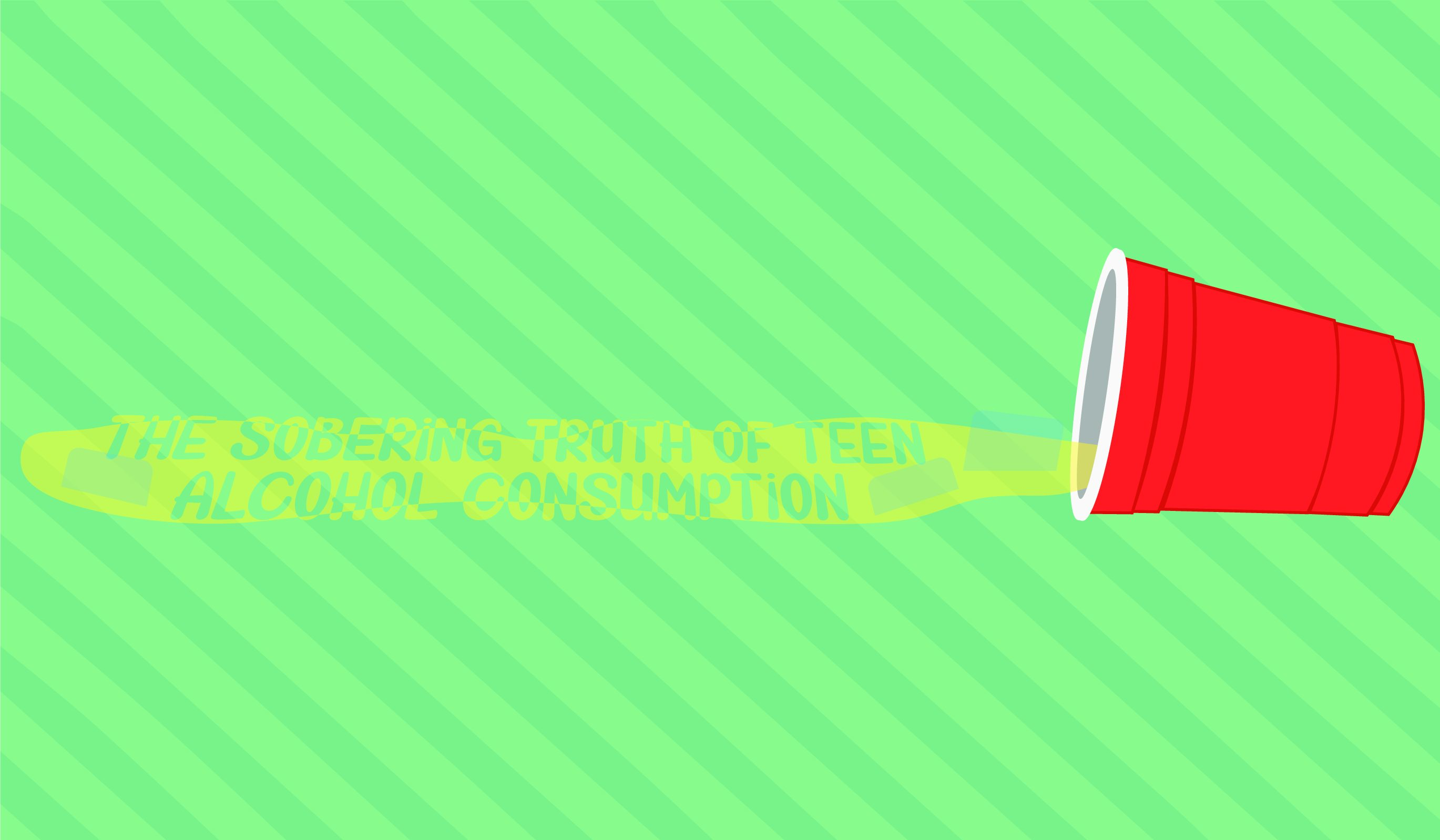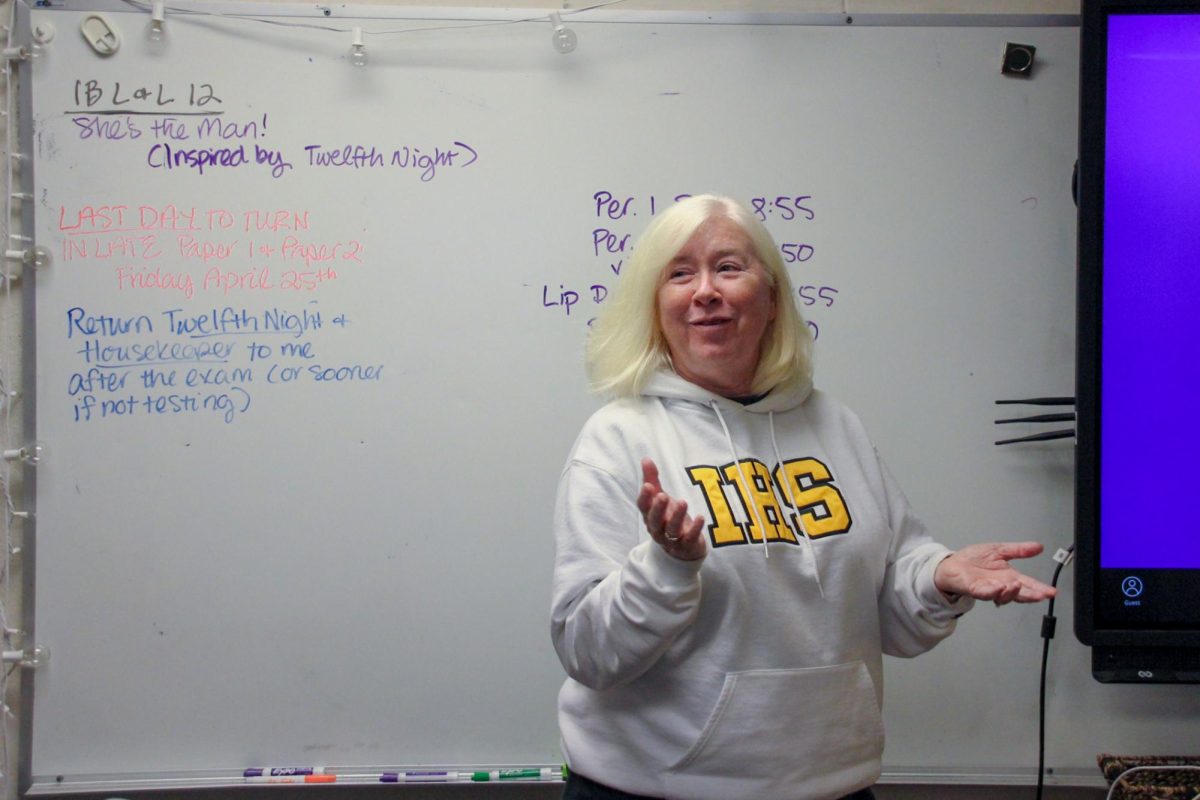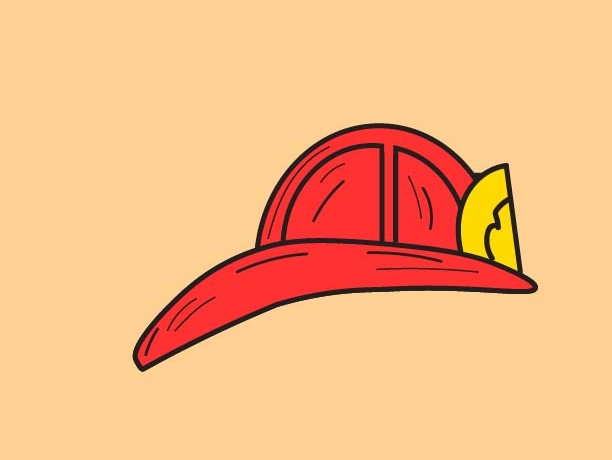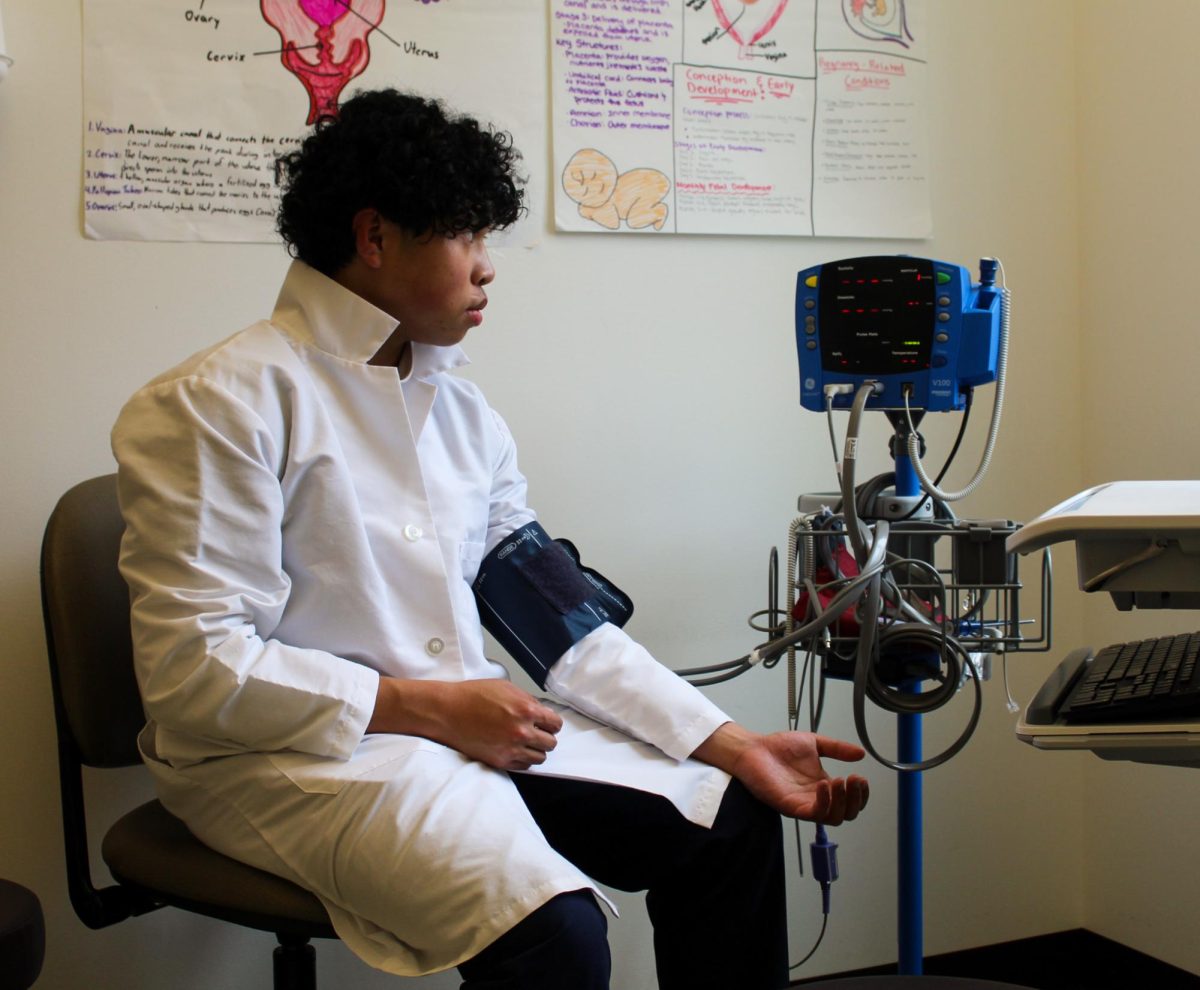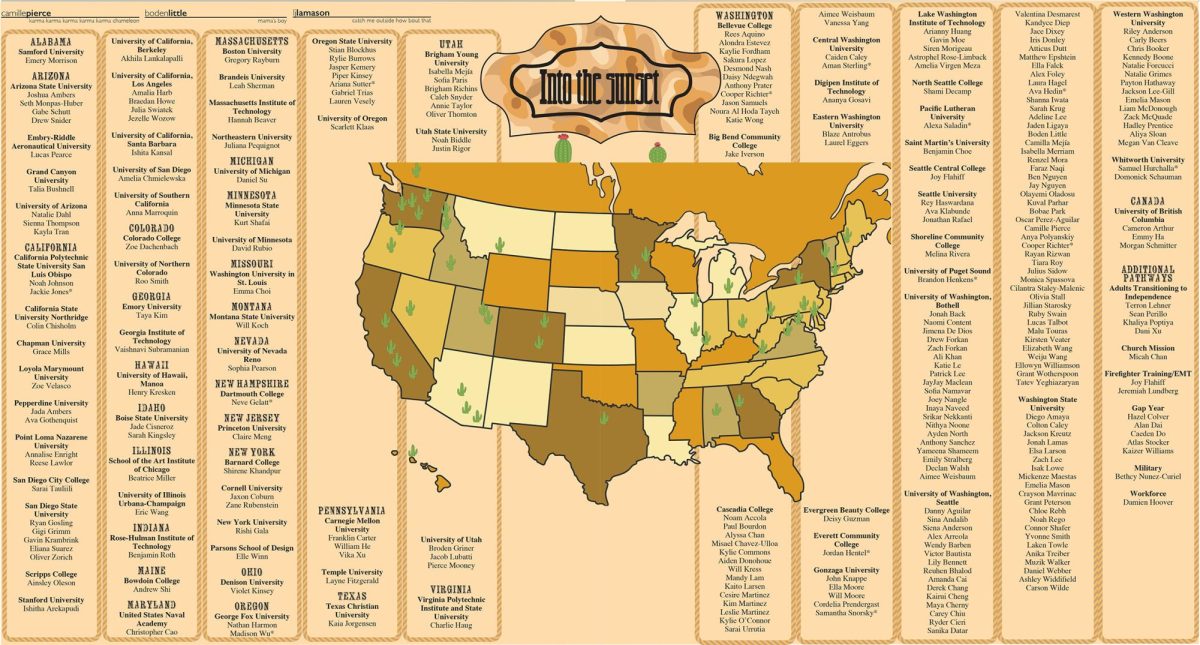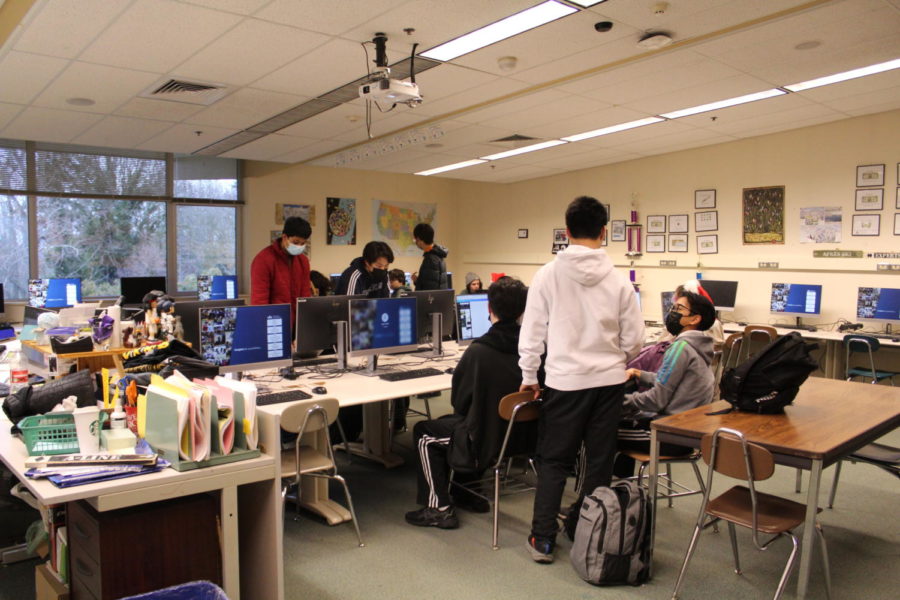Ample Alcohol Availability
Alcohol is the most widely used substance among American youth and can cause enormous health and safety risks. In a recent Nordic News survey of 118 respondents regarding teen drinking, 58% reported engaging in alcohol consumption.
“[It’s] just such an ‘acceptable’ drug that it almost feels that it’s the safer option despite it having much more adverse effects than other drugs,” read a reply from our anonymous survey.
While someone must be over 21 to legally purchase or consume alcohol, it is still accessible to those who are underage. According to the National Institute on Alcohol Abuse and Alcoholism, underage drinking is a serious public health problem in the U.S.. Despite this, only five percent of survey respondents indicated having encountered health or legal consequences.
Parents and friends are the most accessible source of alcohol. According to the survey, 53% of students who consume alcohol obtain it from their parents, and 41% from friends.
“I stole it from my parents, but I also had multiple friends who would just give me stuff. I wouldn’t even have to pay anything. And a lot of it came from my boyfriend at the time,” said senior Kristie Cabrera* (she/her), who started drinking out of curiosity in sixth grade but slowly started consuming more alcohol as she discovered more ways to get it.
“That wasn’t good because he would just bring me beer and not worry about what that might’ve been doing for me,” said Cabrera.
Peer pressure can heavily influence teen drinking and shape its patterns. Adolescents find it challenging to resist social influence from their peers. In order to seem cool, teenagers often emulate the behavior of popular students who drink alcohol, leading them to drink to fit in. Additionally, some teenagers may exaggerate their alcohol consumption to conform to perceived social norms, which can normalize heavy drinking.
“I feel like you’re cool if you drink, if you smoke. It seems you’re more popular and especially if you can do all of that and still be able to get all of your sh*t together,” said junior Alisha Westborn* (she/her).
The brain of a high schooler is not fully developed, making it more vulnerable to alcohol, and easier to influence than the adult brain.
“Just general society and people who make TV shows and movies have to stop being like ‘Oh, it’s normal to drink in high school,’ even if they want to actually accurately
represent high school,” said Cabrera.
Almost a fourth of respondents from the Nordic survey indicated that their first encounter with drinking was when they were younger than 12 years old. This corroborates with data from the National Institute of Health, which concluded that prior to the age of nine, children generally view drinking negatively, but by about age 13, their outlooks become more positive.
“You’re trying to grow up super quick. I feel like everyone started doing things way younger than they used to,” said senior Mira Stephanov* (she/her).
Junior John Cooper* (he/him) expressed similar opinions, saying that social media exposes younger people to adult themes and behaviors, including alcohol, drugs and sex, at an early age, which can negatively impact their development.
“It’s scary, when I was in middle school and people would be like ‘I had sex.’ I’m like ‘What do you mean?’ Nothing is developed—emotionally or socially. You’re twelve years old,” said Cooper.
However, Cooper himself has also made decisions that he regrets.
“Sometimes I’ll be drunk and just wanna drink so much. It’s fun to take shots with your friends, but then sometimes at parties, I don’t end up enjoying myself because I’ll be so sick or blacked out,” said Cooper. “Hangovers suck. I was hungover for like two days. I came to school hungover. I threw up in the school, but it was Halloween weekend, so I had drinks the whole weekend.”
From Fun to Fatal
Alcohol can often be found in abundance at teen gatherings. Many drink at these parties as a way to socialize and have fun. Sophomore Julia Hansen* (she/her) typically drinks almost every weekend. When drinking alcohol, she describes herself as either extremely joyful or slightly reckless.
“I just feel really happy and overfilled with emotions and sometimes it’s like there’s two me’s. There’s me that’s like ‘everything is beautiful, life is beautiful, treat everyone with respect, everything is amazing, I’m so glad that I’m alive.’ Then there’s, ‘I’m gonna die young, I don’t care, I’m gonna do whatever I want!’” she said.
How teens behave at these parties depends on how much self control they have, which can often vary based on who’s hosting and how much alcohol is available. Cabrera explained that in her past experiences, she has witnessed both tame parties as well as more wild ones.
“There’s two types of parties that I go to… One of the parties, it’s like all of my friends, very controlled, the person who hosts it is responsible—they don’t get too drunk. There’s some hard alcohol but it’s mostly just Truly’s and stuff, nobody really gets that drunk,” said Cabrera. “Then there’s another person, she throws parties and every single time I’ve gone to a party, someone is throwing up. She, the host, always gets blackout drunk. Everything to drink is like hard alcohol.”
According to the NIAAA, although underage drinking is illegal, when minors do partake, they should know their tolerance and understand when they’ve had enough to prevent from going overboard. Drinking in a controlled environment decreases chances of overconsumption. Cabrera believes that drinking should be done safely and responsibly.
“I don’t necessarily think it’s a bad thing if you understand the effects of alcohol, you understand your limitations, you don’t drive while drunk, you don’t drink so much you throw up or put yourself in danger,” she said.
However, there is scientific proof that alcohol causes severe cognitive impairment and medium and high blood concentrations of alcohol impair intellectual functioning, reaction time, coordination, reflexes and nerve transmission.
“I definitely feel slurred speech, balance, decision making and emotions,” said Cooper. “I cry a lot. I’m throwing up from drinking. One time I started speaking a different language. I like to squat people. I like to tell people how much I love them. I get really emotional and will start telling all my worst, darkest secrets.”
The line between drinking occasionally and drinking to the point of dependency can be very thin. When a person craves alcohol and can’t control their drinking, they are classified as an alcoholic. Alcoholism is a chronic disease that can be hereditary.
Alcoholism causes cravings and loss of control around alcohol. If family members have struggled with addiction, the chances of their children developing it is more likely. Westborn is an ex-alcoholic, and she believes that people become alcoholics by using alcohol as a coping mechanism.
“Everyone for the past like five generations of my family is an alcoholic,” said Westborn, “And my whole family has a lot of alcoholism. So I’m very prone to it genetically, but also I was dealing with a lot of mental health at the time, and I was like, ‘Why not just go for it’ because everyone else was doing it. I kind of just got trapped in a bad cycle. I was not in a good place.”
Unfortunately, adolescent alcohol abuse is widespread, with many young people turning to alcohol as a way to cope with emotional challenges. However, this can quickly spiral out of control and lead to addiction. Studies have shown that adolescents who start drinking before the age of 15 are four times more likely to develop alcohol dependence than those who start at
age 21 or later. Westborn believes that the primary reason behind teenage alcohol consumption is mental health issues and the feeling of isolation. Teenagers often resort to drinking because they feel lonely, and this can start at parties where drinking is considered acceptable.
However, it becomes a serious problem when teenagers start drinking alone, and it can lead to a vicious cycle where they believe that drinking is the only way to cope with their problems. Being an alcoholic may involve habitual drinking. It can seem so ordinary that recognizing it can be extremely difficult. Hansen thinks that knowing how to identify alcoholism is vital in preventing it from getting even worse.
“You need to understand when it becomes a problem, and for your friends too, you need to pay attention to that because it can easily become a problem way before you even realize or that your friends realize and then you’re stuck and then a lot of times, at least from my family’s experience, once you’re stuck, it’s almost impossible to get out,” said Hansen.
Long-term Lethal Effects
It’s often difficult for someone to recognize when their drinking habits take them from a relatively harmless activity to reckless actions and sometimes even to a life-threatening state. Teenagers under the influence have an increased risk of accidents and injuries, academic problems and addiction. According to the CDC, in 2019, one in ten high school students reported drinking and driving. In the same year among drivers aged 16-20 who were involved in fatal crashes, 21% had alcohol in their system.
“I almost died once because me and my cousin were at a party, and we decided that we were going to go home drunk. That was the first time I ever blacked out. So we got into the car and we started driving, and I started yelling ‘we’re going 120 miles an hour!’” said Hansen. “It was downhill, and it was [supposed to be] 25 miles an hour. We hit the curb and almost crashed.”
One of the most prominent causes of fatalities under the influence is reckless driving. Reckless driving resulting in a fatality can lead to charges of vehicular manslaughter or even second-degree murder, which may include imprisonment. According to the National Highway Traffic Safety Administration, in 2019 there were 10,142 fatalities in motor vehicle crashes involving alcohol-impaired drivers, accounting for 28% of all traffic-related deaths in the United States.
In addition to the fatalities caused by drunk driving, underage alcohol consumption can also cause serious health problems. This includes immediate and long term physical health problems from alcohol poisoning and injuries sustained during accidents to liver damage, brain development issues and an increased risk of certain types of cancer.
“I just seen some people get their stomach pumped when they try to push their limits,” said sophomore Rogelio Lee* (he/him). “Just maybe try to get past something in their head when they’re sad. They’re just trying to get out of their mind, so they drink till they have to get their stomach pumped.”
Stomach pumping, also known as gastric lavage, is a medical procedure used to remove harmful substances from the stomach. It’s a common treatment for alcohol poisoning, which occurs when someone drinks too much alcohol in a short period of time. Underage drinking can also have negative effects on academic performance, as alcohol consumption can impair cognitive function, memory and decision-making skills, leading to poor grades and decreased academic achievement. Cabrera said that she has experienced similar effects.
“It might just be in my head, but I genuinely feel like I became a worse student, I feel like I kind of lost passion for a lot of things.” said Cabrera. “I honestly think I used to be a really good student and I still think of myself as a good student, but I wonder what life would be like if I didn’t start that sh*t so early.”
A survey conducted by the Substance Abuse and Mental Health Services Administration proved this. It found that high school students who reported drinking heavily were more likely to have lower grades and miss school. The negative impact of drinking is taught in the high school health curriculum’s unit on alcohol, but senior Evie Richards* (she/her) and 57.5% of respondents to Nordic’s survey think that what’s being taught isn’t good enough.
Richards suggested that instead of emphasizing what not to do, there should be more emphasis on safety in case something does happen. She proposed teaching children about their legal rights, such as the ability to call the
authorities without repercussions if someone is struggling.
In Washington, the 911 Good Samaritan Law provides legal immunity to individuals who seek medical assistance for themselves or others in the event of a drug overdose or alcohol-related emergency. Under this law, neither the person seeking assistance nor the person in need of assistance can be charged or prosecuted for drug or alcohol possession, possession of drug paraphernalia or being under the influence of drugs or alcohol at the time of the emergency.
Although the immunity does not extend to other drug related crimes, such as drug trafficking or distribution, this law does attempt to create a safer environment for teenagers to call 911. This law is overlooked in the health curriculum at Inglemoor. As stated by Richards, while she has not directly encountered circumstances that would require knowledge of this law, there have been incidents at social gatherings where the lack of understanding surrounding this issue resulted in serious consequences.
“This other girl, she was just throwing up like crazy, and she got alcohol poisoning. Her friends took her phone. They were like, ‘Don’t call anyone, you’ll be fine.’ She was not. She was really serious. She ended up getting to the hospital, but it was a lot later,” said Richards.
Richards suggests that certain life skills, such as how to seek help in case of an emergency and how to handle difficult situations, should be taught in schools. By teaching these skills, teenagers will become less fearful and better prepared to make good choices and avoid making poor decisions, such as leaving someone stranded in a dangerous situation.
“Those bad decisions happen,” said Richards. “I think because they’re trying to get people to stop, which I think is very fair and you should always go for that, but telling people: here’s how to get the help you need in case you are in this situation is important.”


